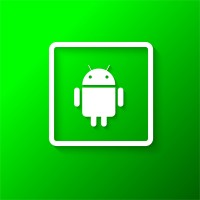
- Flutter AppBar
- Flutter Container widget
- Flutter Text widget
- RichText Flutter
- Row in Flutter
- Column in Flutter
- ListView in Flutter
- GridView in Flutter
- Stack in Flutter
- Expanded in Flutter
- SizedBox in Flutter
- Padding in Flutter
- Center in Flutter
- Align in Flutter
- FractionallySizedBox in Flutter
- AspectRatio in Flutter
- Baseline in Flutter
- TextField in Flutter
- Checkbox in Flutter
- Radio in Flutter
- Switch in Flutter
- Slider in Flutter
- DropdownButton in Flutter
- CupertinoPicker in Flutter
- ElevatedButton in Flutter
- TextButton in Flutter
- IconButton in Flutter
- GestureDetector in Flutter
- InkWell in Flutter
- PopupMenuButton in Flutter
- Image in Flutter
Switch in Flutter
18-Sep-2024Learn how to use the Switch widget to create toggle buttons for user preferences in Flutter
A switch widget creates a toggle button that allows the user to switch between two states.
Typically represents an on/off or true/false scenario.
There Are Some Common Attributes for switch
| value | value property represents the current state of the switch |
| onChanged | The onChanged callback is triggered when the switch is toggled, and it updates the _isSwitched state accordingly. |
Here's a simple example of using a switch in Flutter:
File open lib->main.dart file −
import 'package:flutter/material.dart';
void main() {
runApp(
MyApp()
);
}
class MyApp extends StatefulWidget{
@override
_MyAppState createState() => _MyAppState();
}
class _MyAppState extends State<MyApp> {
bool _isSwitch = false;
void _handleRadioValueChanged(bool value) {
setState(() {
_isSwitch = value;
});
}
@override
Widget build(BuildContext context) {
return MaterialApp(
home: Scaffold(
appBar: AppBar(
backgroundColor: Colors.blue,
title: Text('Switch Example',
style:TextStyle(fontSize: 20,color: Colors.white)),
),
body:
Center(
child: Column(
mainAxisAlignment: MainAxisAlignment.center,
children: [
Switch(
value: _isSwitch,
onChanged: _handleRadioValueChanged),
SizedBox(height: 16.0),
Text('Selected Option: ${_isSwitch ? 'on' : 'off'}')
],
),
),
));
}
}
Open
Device Manager, run the emulator, and then run the application. Next,
check the working output and check the output you declared in your
code.
Output:



